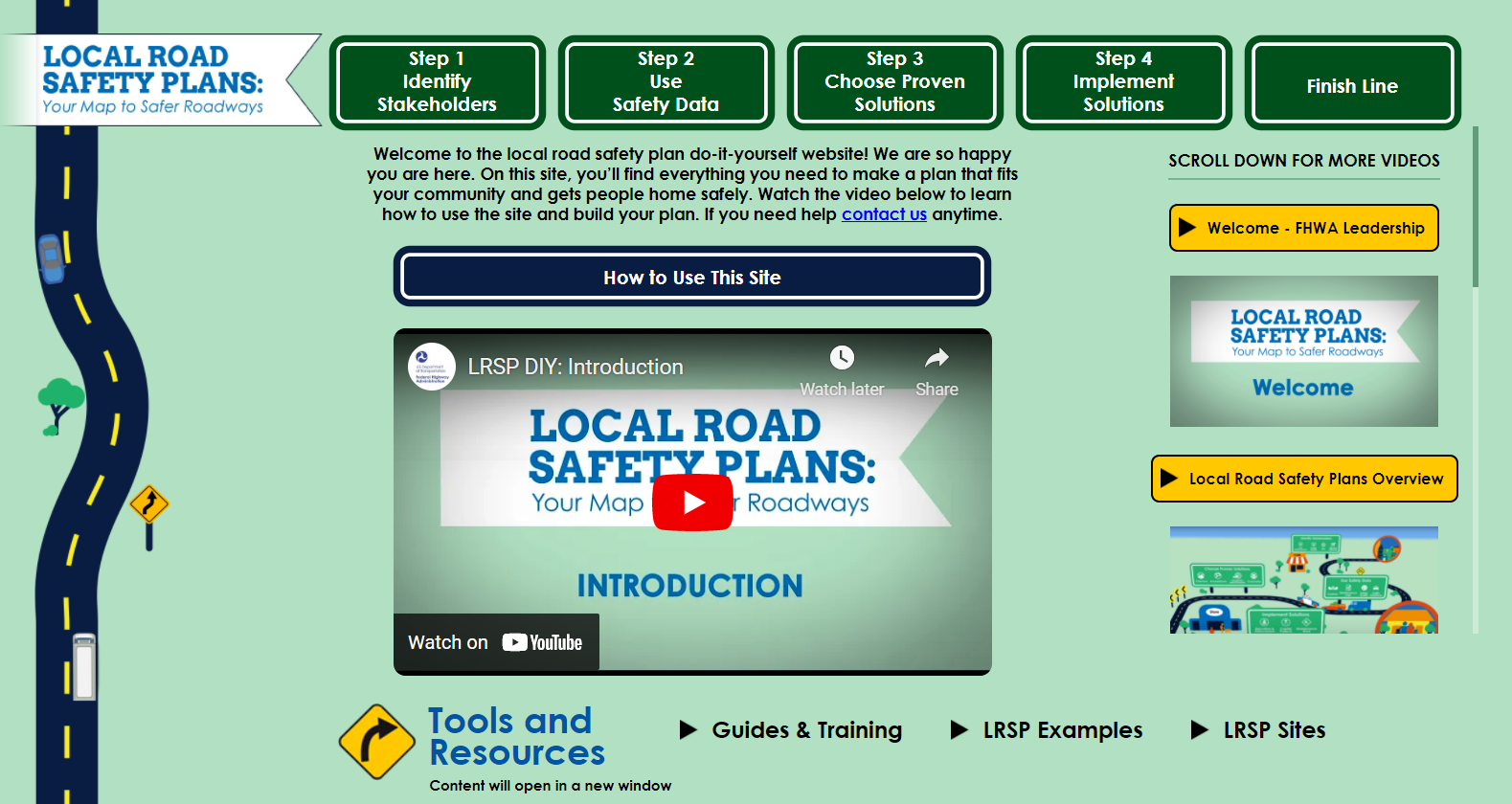
Driving FoRRRwD: Tools for Reducing Rural Roadway Departures
What if you could prevent rural roadway departure crashes from happening? Would you do it?
Nearly 12,000 people die each year when their vehicle leaves its travel lane. That is 30 people today, and every day. Thanks to new tools, research, and approaches, it is more possible than ever to reduce rural roadway departures and get more people home safely each day.
The FHWA Focus on Reducing Rural Roadway Departures (FoRRRwD) team is promoting these tools and approaches nationwide. Cate Satterfield, the FoRRRwD team co-lead, says true progress toward reducing or eliminating rural roadway departures starts with a new way of thinking.
“Historically, transportation practitioners looked for concentrations of crashes on their system. Those are called ‘hot spots,’” Satterfield said. “When you find a hot spot, you analyze the location and customize a solution to mitigate the threat. It is site specific. However, that is a reactive approach. Something terrible has to happen before changes can be made. While hot spot analysis will always be important, there are rarely hot spots when it comes to rural roadway departures. There are other effective approaches that can actually get ahead of the crashes.”
Site Specific or Systemic?
These new approaches include systemic analysis. The systemic approach considers where crashes have happened in the past but does not stop there. It uses roadway, traffic, and other data along with crash data to look for roadway characteristics that correlate with severe rural roadway departure crashes.
For instance, if 50 percent of severe crashes on a network are on curves with a radius between 300 and 500 feet, but only 30 percent of the curves fit that category, that is a potential risk factor. Other risk factors might be curves with shoulders less than 2 feet or with no edge lines.
With the systemic approach, practitioners can look for all the curves on their system with those characteristics because they signal risk of a severe crash. Agencies can then target cost-effective countermeasures to those locations, sometimes before crashes happen. They can even prioritize locations based on which curves have multiple risk factors. To further explain the principles of the systemic approach, FHWA recently published a video.
“The systemic approach has amazing potential to save lives,” said Dick Albin, the FoRRRwD team co-lead. “And there are more tools than ever to help practitioners conduct systemic analysis.”
New Tools for a New Approach
The Systemic Safety Project Selection Tool provides a step-by-step process for conducting a systemic safety analysis and helps practitioners balance this approach with traditional hot spot treatments.
One of the most powerful tools are Local Road Safety Plans (LRSPs). They are one of FHWA’s Proven Safety Countermeasures. LRSPs often rely heavily on the systemic approach, which allows agencies to analyze their systems and target investments to the highest-risk locations. The plans document the analysis and approach, making it easier to communicate investment decisions to stakeholders and provide for continuity through staff changes.
These plans are so effective that several States, including Washington and California, either have or are planning to require LRSPs for counties and cities to apply for Federal Highway Safety Improvement Program funding. FHWA created a Local Road Safety Plans DIY website to help agencies develop LRSPs. The site includes step-by-step instructions, tutorial videos, and sample plans and templates.

FHWA’s Local Road Safety Plans DIY website offers step-by-step instructions for creating LRSPs.
Credit: FHWAAnother powerful tool is the FHWA Crash Tree Maker. The tool creates crash tree diagrams, which help agencies use crash datasets to identify the types of locations at most risk of severe crashes on their systems. Crash tree diagrams visualize safety issues and are a key part of systemic analysis. FHWA also developed a tutorial video on using crash trees and included an updated Crash Tree Maker on the LRSP DIY website.
The Crash Data Summary Template is another tool that many agencies have used to summarize crash data and detect over-representation, which helps agencies identify focus crash types. Both of these tools can be downloaded under the DIY website Systemic Tools dropdown menu.
FHWA conducted a webinar in April 2021 about the Crash Tree Maker and other analysis tools. The webinar included the experiences of States that have taken advantage of the tools. Representatives from Washington State and Alabama shared their stories.
“It is really encouraging to see States having success with these tools,” Satterfield said. “They have a passion to make the roads safer, and now they have the tools they need to use their data to great effect.”
The Safe System Approach Brings It All Together
The Safe System Approach is a holistic philosophy of roadway management that starts with a challenge: Imagine a world where nobody dies from vehicle crashes.
The systemic approach works well with Safe System principles because humans make mistakes (like leaving their lane) and it is proactive (not waiting for crashes to happen). Rural roadway departure crashes account for nearly one-third of national roadway fatalities each year. These new methods and tools can help realize the vision of zero deaths.
“This is a very exciting time to be in transportation safety,” Albin said. “We have unprecedented opportunities to really make a difference in saving lives because we have better tools than ever. Our goal is to help people use them.”
—MORE INFORMATION
Visit FHWA’s FoRRRwD website for details on this initiative, including an overview video and links to additional resources such as promotional materials, webinars, and articles.
Contact Cate Satterfield of the FHWA Office of Safety or Dick Albin of the FHWA Resource Center for information and technical assistance.
Recommended Citation: U.S. Department of Transportation, Federal Highway Administration - Washington, DC (2021) Innovator Newsletter, July/August 2021, Volume 15(85). https://doi.org/10.21949/1521363



